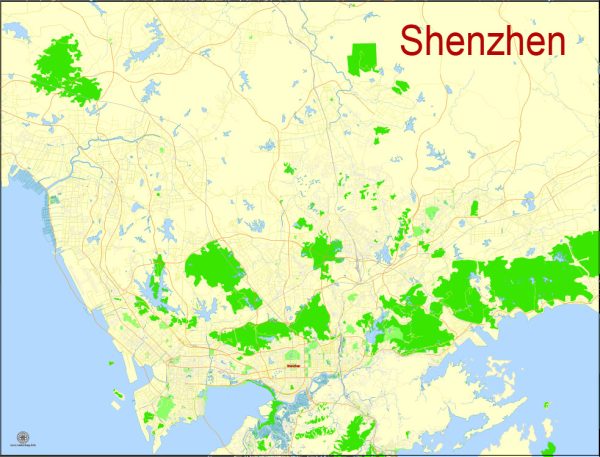Shenzhen’s history of urban development is a fascinating story of rapid transformation from a small fishing village to a bustling metropolis and a global economic powerhouse. Here’s a brief overview:
- Early History (Pre-1980s):
- Shenzhen’s history dates back to ancient times, but it was a small market town and fishing village with a population of around 30,000 in 1979.
- The city was located in the southern part of Guangdong Province, adjacent to Hong Kong.
- Special Economic Zone (SEZ) Designation (1980):
- In 1980, Shenzhen was designated as China’s first Special Economic Zone (SEZ) by the central government under Deng Xiaoping’s economic reform policies.
- The SEZ status granted Shenzhen greater economic autonomy and flexibility in attracting foreign investment and implementing market-oriented reforms.
- Rapid Economic Growth (1980s-1990s):
- Shenzhen experienced explosive economic growth, becoming a key hub for foreign investment and a major manufacturing center.
- The city became a testing ground for market-oriented economic reforms, attracting businesses from Hong Kong and around the world.
- The establishment of the Shenzhen Stock Exchange in 1990 marked another milestone in the city’s development.
- Urbanization and Infrastructure Development:
- The city underwent rapid urbanization, with a surge in population as people from other parts of China migrated in search of employment opportunities.
- Infrastructure development played a crucial role, with the construction of modern transportation networks, residential complexes, and commercial centers.
- High-Tech and Innovation Hub (1990s-2000s):
- In the late 1990s and early 2000s, Shenzhen shifted its focus from labor-intensive industries to high-tech and innovation.
- The city became known as the “Silicon Valley of China,” home to numerous technology companies and startups.
- Cultural and Creative Industries (2000s-Present):
- Shenzhen has increasingly invested in cultural and creative industries, fostering a vibrant arts and design scene.
- The OCT-LOFT and Shekou areas have become cultural and artistic hubs, hosting exhibitions, events, and creative spaces.
- Global Financial Center and Innovation (2010s-Present):
- Shenzhen continues to evolve as a global financial center, with a growing number of multinational companies establishing a presence.
- The city remains at the forefront of technological innovation, with a focus on areas such as artificial intelligence, biotechnology, and green technology.
- Sustainable Development and Urban Planning:
- Recent years have seen increased emphasis on sustainable development and urban planning, with efforts to create green spaces, improve public transportation, and enhance overall livability.
Shenzhen’s history of urban development showcases a remarkable transformation, illustrating the success of China’s economic reforms and the city’s ability to adapt and innovate in response to changing global economic trends.


 Author: Kirill Shrayber, Ph.D.
Author: Kirill Shrayber, Ph.D.